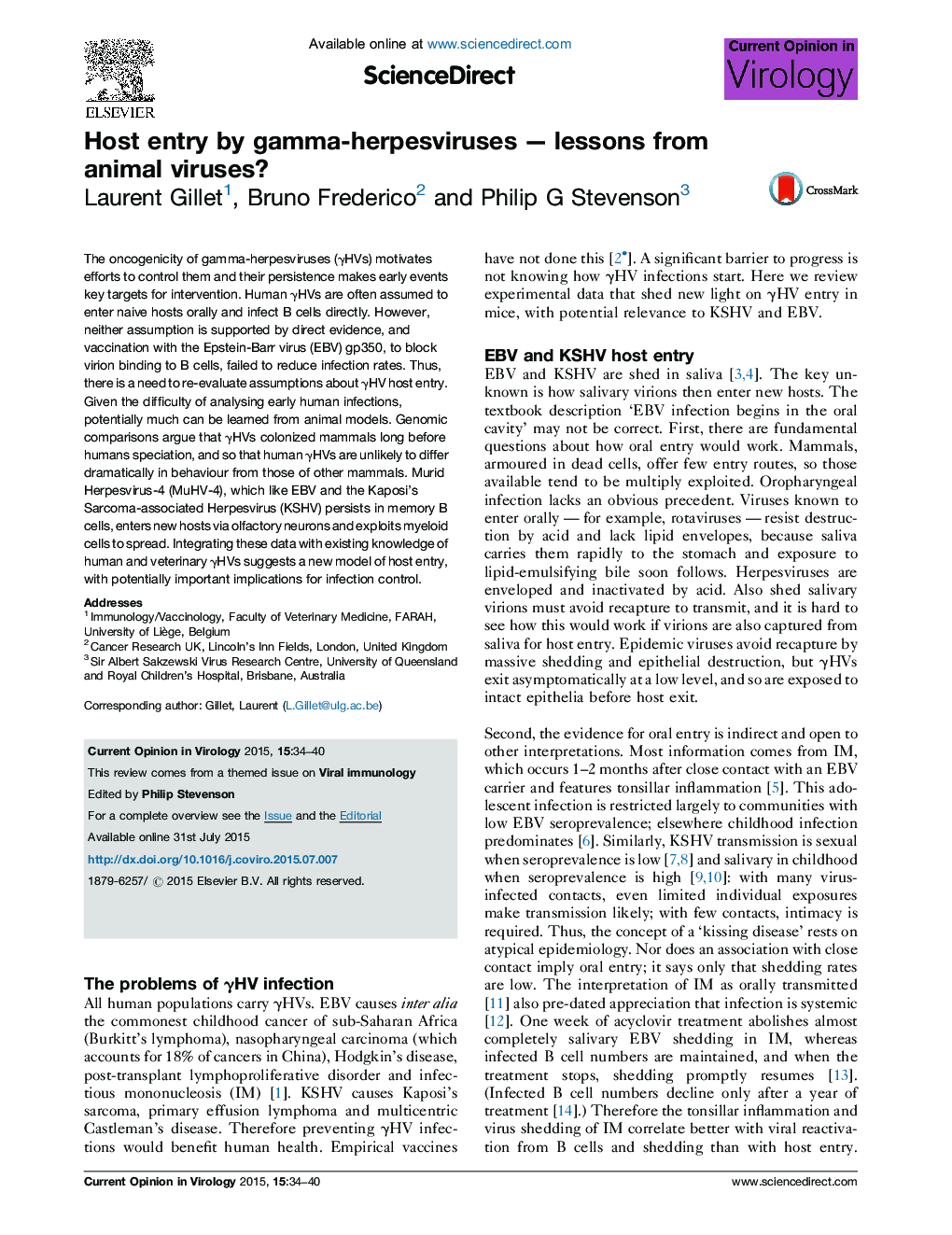| Article ID | Journal | Published Year | Pages | File Type |
|---|---|---|---|---|
| 2473208 | Current Opinion in Virology | 2015 | 7 Pages |
•There is no good evidence for oral gammaherpesvirus entry.•Animal viruses can help us to decipher their human counterparts.•MuHV-4 enters new hosts via the olfactory neuroepithelium.•It exploits immune communication routes to access B cells and spread.•It enters and exits at distinct sites.
The oncogenicity of gamma-herpesviruses (γHVs) motivates efforts to control them and their persistence makes early events key targets for intervention. Human γHVs are often assumed to enter naive hosts orally and infect B cells directly. However, neither assumption is supported by direct evidence, and vaccination with the Epstein-Barr virus (EBV) gp350, to block virion binding to B cells, failed to reduce infection rates. Thus, there is a need to re-evaluate assumptions about γHV host entry. Given the difficulty of analysing early human infections, potentially much can be learned from animal models. Genomic comparisons argue that γHVs colonized mammals long before humans speciation, and so that human γHVs are unlikely to differ dramatically in behaviour from those of other mammals. Murid Herpesvirus-4 (MuHV-4), which like EBV and the Kaposi's Sarcoma-associated Herpesvirus (KSHV) persists in memory B cells, enters new hosts via olfactory neurons and exploits myeloid cells to spread. Integrating these data with existing knowledge of human and veterinary γHVs suggests a new model of host entry, with potentially important implications for infection control.
